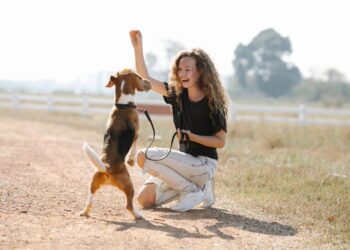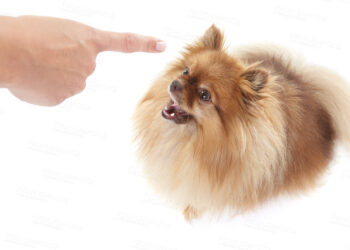Nowadays, horses are no longer trained by force and violence, as was sometimes the case before. Dressage plays an important role in the start of a horse’s life: without this essential education which will give him confidence, he will be less efficient, less voluntary, more fearful. The stripping is an essential first step in the formation of the bases of the relation man-horse; then this step will allow you to move on to the actual training.
In this article, we will see the difference between breaking in and training, and give some tips on training the horse. Then we will explain, step by step, the principles for breaking out a horse. We will end with some tips on choosing a good trainer for your horse.
Difference between dressage and pecking
These two terms are not always well-differentiated in many training methods. But in fact, they follow each other, without any real transition.
The breaking
Nowadays, when we talk about breaking in, we are referring to the step which consists of making the horse accept harnesses and other equipment, its rider, and making him obey the various aids. In riding, we call “aids” the means used to train a horse: it is about the voice of course, but also so-called natural aids such as the legs, the hands, the use of the weight of the body (the plate ),
the orientation of the upper body, as well as so-called artificial aids, that is to say, the accessories such as the stick, the whip, the pole, the lanyard or the reins … This breaking phase can last from a few days to a few weeks, depending on the method used. Breaking is therefore the first phase of the horse’s education allowing him to accept his rider, the reins,
Dressage
Breaking in is a prerequisite for dressage which is itself a crucial step for the practice of many equestrian disciplines. Thus, whether your horse is intended for show jumping (showjumping), cross country, or horseback riding,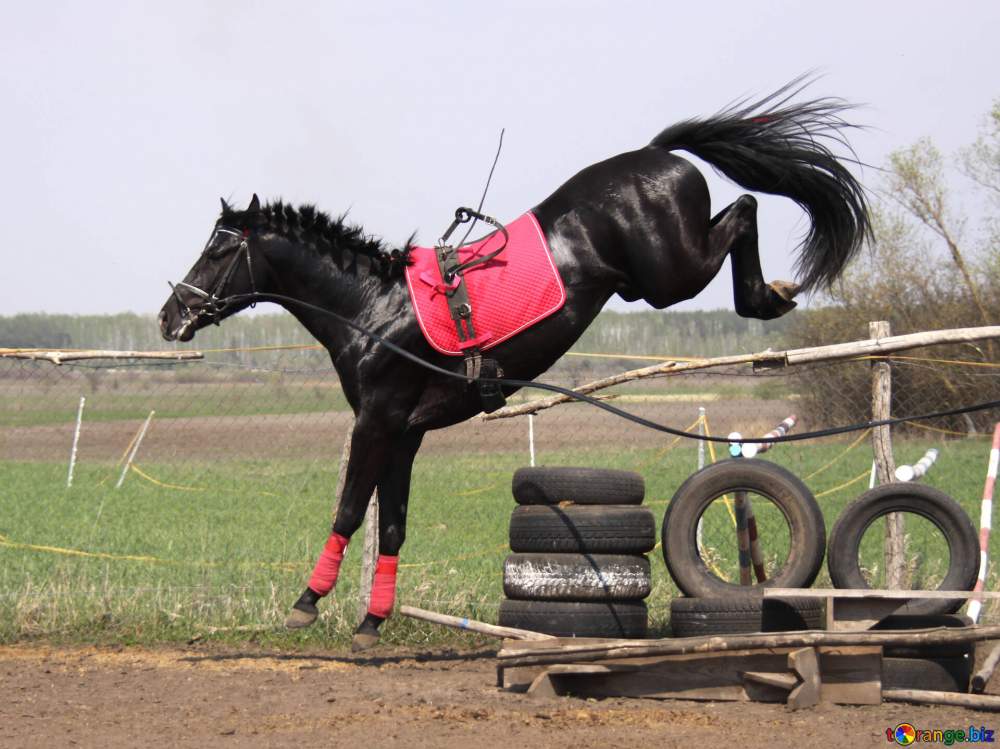
it will be very useful for him to master the 3 gaits (step, trot, gallop), to be able to correctly manage transitions and certain figures of merry-go-round such as the volte, the diagonal or the serpentine, and to know certain training techniques such as supporting it or extending the neck. So your horse will continue to evolve more easily by gaining in fluidity and elegance.
How to break a horse?
The trainer will start the breakout gently, taking his time and with the necessary patience. Typically, there are different steps to follow to properly break out a horse.
Reading suggestions: 500 Horse Names For Male and Female Horse Names
Observation of the interior and exterior
The trainer usually starts by observing the horse’s back: it is often sagging because the animal does not yet have enough muscles; it would therefore be painful for him to wear a rider in this physical condition. This, therefore, justifies a gradual approach.
During the evaluation of the exterior, the trainer studies the horse standing, but also in freedom. Thus, he can see if the animal is able to balance itself in the movement, and is able to assess the carrying capacity of the back.
But the horse must also be able to deal psychologically with the new challenge of being ridden. Is he afraid of people? Is he nervous and neighing in the direction of the herd?
Or does he push the
In all these cases, groundwork, in full concentration, will have to be done over a long period to strengthen the interior of the horse until he can move on to the next stage. But if a horse is initially not very concentrated and ignores the trainer, we will direct it to the next step: groundwork.
Groundwork
The goal of groundwork is to remove fear from the horse and encourage its curiosity while building mutual trust. From the start, the trainer appears in a leadership position: he behaves in a coherent and dominant manner but inspires confidence. The horse will be happy to subordinate himself under these conditions: his ability to learn and to concentrate will increase.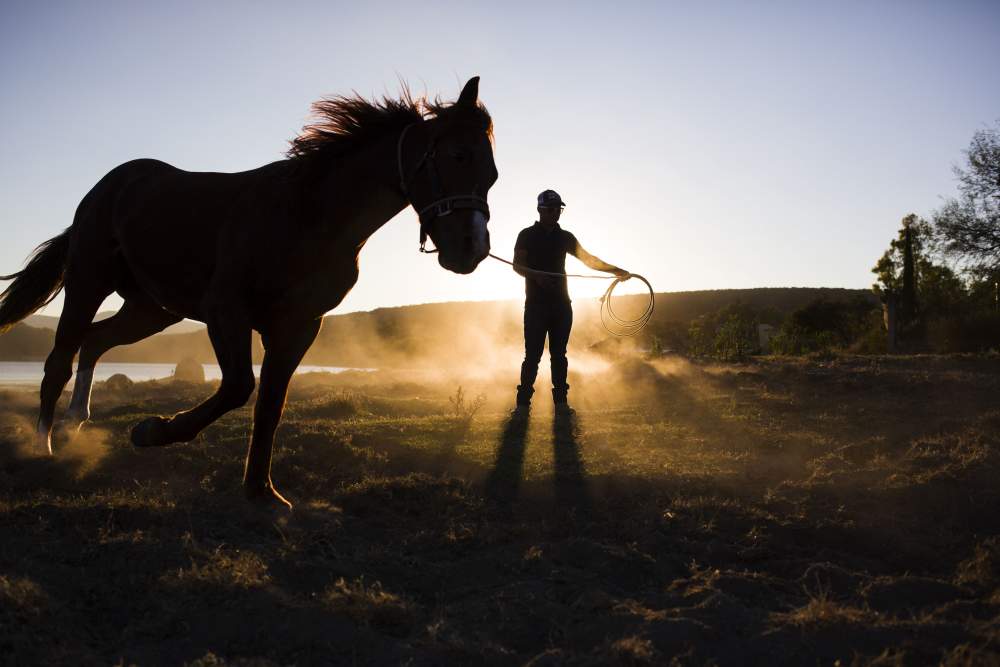
The basics of groundwork include essential exercises such as leading the horse or standing still: the horse should only pay attention to the person with him. This will protect him later from dangerous situations (following disobedience for example) and will facilitate the man-horse partnership.
Once you gain your horse’s confidence on the ground, breaking out will not be that difficult.
Put on the bridle
After working on the ground, the young horse who has gained confidence in his trainer will have to get used to the bridle. The trainer starts by sniffing her on the bridle, then gently pushes the bit into her mouth. The latter must be positioned so as not to disturb either the incisors or the molars of the horse.
Lunge work
After the bridle, the horse will have to get used to the loin.
Lunging young horses greatly contributes to their physical condition. By trotting in a forward and downward posture, he learns to contract his abdominal muscles and arch his backline. In this way, the bottom of her neck retracts and allows the development of her back muscles, necessary for riding. In addition to stabilizing his back, lungeing also teach him to balance himself better and find his rhythm.
Reading suggestions: 500 Horse and Racehorse Names
Saddle the horse
During the work on the loin, the horse has already become familiar with a strap, the surface of the loin.
The saddle is something completely new for the young horse. Before putting her on her back for the first time, good preparation (floor work) must have consolidated her confidence in her trainer and aroused her curiosity about training.
An assistant holds the horse with a long rope while the trainer shows him the new equipment. Then the horse will be allowed to sniff the saddle and the blanket profusely, which, if it shows no fear, will be installed slowly and carefully, in the following order: first the blanket, then the saddle.
This saddle-laying step will be repeated from time to time to get the horse used to it, and when confidently he lowers his head, the trainer can then slowly tighten the girth as well.
Put your foot in the stirrup
The trainer will not try to mount the horse right away: he will first train him to accept the load of the rider who puts his foot in the stirrup. This is why the first ride of a rider must be done in a fun way. At this stage, the horse still considers the trainer to be a trusted person. However, it is not the latter who will put the foot in the stirrup, but a third person, so that the horse can keep contact with the trainer on the ground, in case of stress.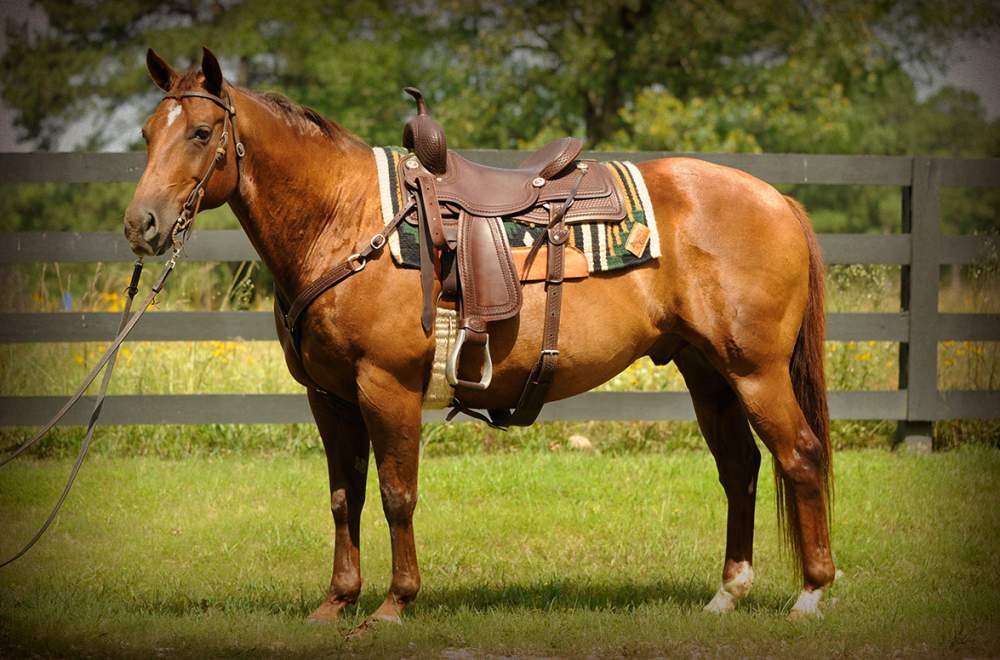
To do this, the trainer maintains pressure on the opposite stirrup while the assistant puts his foot in the stirrup. Thus, the horse feels pressure on each of the two stirrups, on either side of his body. This procedure can be repeated several times during tethering until the horse remains completely relaxed. Once the horse gets used to it, the helper can go a step further and rest his upper body in the saddle. If there is no problem, he can then pass his leg over the saddle, so that he is sitting on the horse passively, without doing anything else. The frequency of repetition required to achieve this result varies considerably from horse to horse.
Guide the horse at a walk with a rider on his back
If the horse is tolerant of the rider and is relaxed, the trainer can begin to walk him through a few laps. Thus, the horse learns to support the weight of the rider during the movement. The rider must neither pull on the reins nor use the bridle under any circumstances. He should not exert any action on the horse but only adapt to its movements. The trainer can at this stage repeat some exercises already known, such as guiding the walk or staying in a still position. The horse integrates while everything is as usual, but with a weight on the back, in addition.
Lunge work with a rider on the back
If everything has gone smoothly so far, you can take the horse with the rider on its back on the lunge. At the start, the rider will remain passive, while the trainer will work on the lunge in the usual way. Then gradually, the trainer will leave more and more responsibilities to the rider who will then start to exert actions on the horse, but will not take the reins until the very end.
First of all, he must support the movements of the horse only with his body. The horse, at this point, already knows the tether and vocal commands. Thereafter, it is the rider who will lead the horse; the latter understands that it is then directed from above, which improves the dynamics. In the end, the coach can remove the lanyard. If all of this works well, the horse can be ridden.
Ride a horse without a lead
The rider now controls the horse from above. After lungeing, the horse is now used to having resistance in the mouth. However, the rider should not yet try to steer the horse using the reins: at this stage, they only serve to control his gait and obedience. The desired position, namely head forward and down, should settle naturally as the horse relaxes; he will then let his rider determine the direction, tempo, and rhythm to follow.
Gallop preparation
Galloping is not immediately required in the breaking out phase. Only if the horse does it on its own, the trainer allows it (assuming the horse gallops correctly). Otherwise, the canter will be “suggested” by the trainer at the end of the break-in. The canter must first be prepared by handwork. The horse already knows the overlapping of the hind legs thanks to the phase of work on the ground which favors the obedience of the thighs and leads him to relax the hind leg located inside during the movement.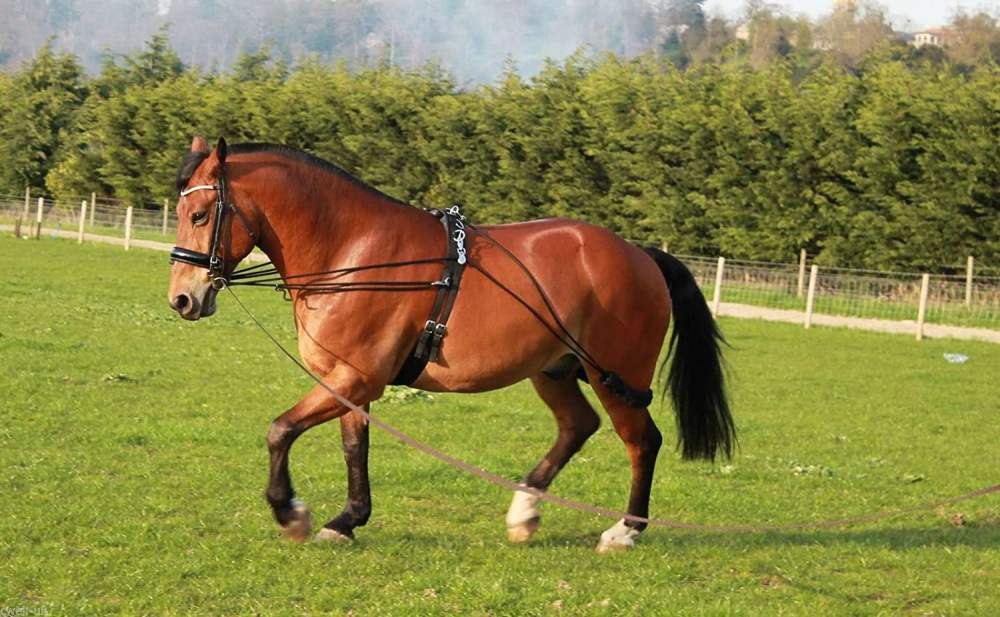
Horse training
Thorough training of your horse will take years if you are serious about it. It is certainly a long time, but the game is worth the candle: in return, you will have a satisfied horse, confident in man, and especially in you, his rider.
Training the horse: what does it consist of?
This will include teaching him to trust, spending time with him, training him to be guided, teaching him basics like giving a hoof or being able to follow calmly. He will have to start on his long list of work: the first steps with a rider on his back, his first curves, and work on the ground to activate the hind legs.
Then the trainer will then have him work on transitions, on his physical condition and bodybuilding, as well as on man-rider confidence. A recurring objective is to teach him to move and work more and more relaxed. Training a horse is a long-term project that can never be done in four weeks flat.
Training methods
There are many good methods of horse training: there is not a valid one, it would be simplistic to think so. It’s a bit like professional trainers and trainers: everyone has their personality, their sensitivity, their approach, their perception of the horse, their experience, based on their failures and successes.
In the end, the results can be good with different methods. What may vary from one method to another will be the impact it will have on your horse’s bodybuilding and personality. Applied with patience, generosity, and serenity, a good method will not tarnish your horse, and this is already an essential point!
Reading suggestions: Horse Weight: All You Need To Know About Average Horse Weight
Choose a professional trainer
Training a horse is a profession. Do you know the adage that goes: “On a young horse, the old rider. To the young rider, old horse ”? There is a great deal of truth to this expression, namely that experience is essential in the first contact with a young horse, especially in dressage.
A word of advice: do not try to break open your horse yourself, but call in an expert. Indeed, you could then have great difficulty in correcting the errors of training resulting from your education or repairing the defects already acquired by your mount.
How to find a good trainer for your horse?
This question does not have a single answer, far from it… Indeed, each trainer has his own personality and proposes a different method. So how do you know if a trainer is doing a good job and you can trust your horse? There are, however, a few clues to consider: they will guide you in choosing your trainer.


